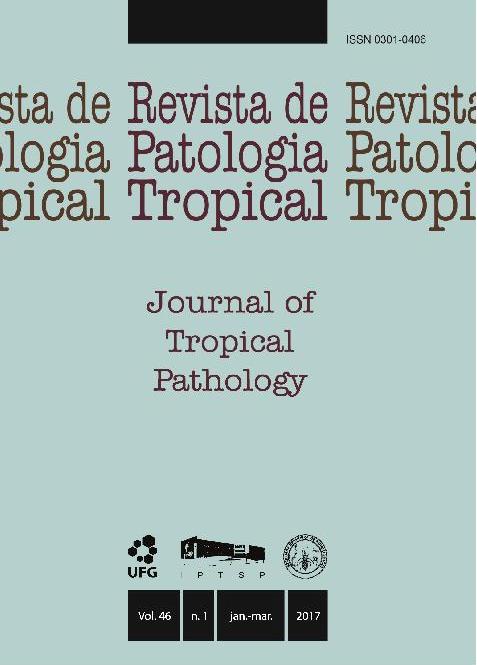DENGUE EPIDEMIOLOGICAL PROFILE IN SOUTHERN MATO GROSSO, BRAZIL (2008-2012)
DOI:
https://doi.org/10.5216/rpt.v46i1.46302Palavras-chave:
Dengue, epidemiology, disease notification.Resumo
Dengue is an arboviral disease that is a serious public health concern, especially due to its increasing incidence in the past decades. This study aimed to characterize the epidemiological incidence of dengue in 2008–2012 in Southern Mato Grosso, Brazil. This is an epidemiological and descriptive study of dengue in the 19 municipalities of the Rondonópolis Regional Health
Office using data obtained from the Information System of Diseases Notification. An analysis of the number of confirmed cases of dengue, according to year, age, and gender was performed.
Data was associated with the rainfall of the region as well. There were 13,580 reported dengue cases; 2010 had the highest number of cases, with 7,244 dengue cases. In 2011, the number fell dramatically to only 236 notified cases. With regard to age, the most often affected were young adults (20-39 years of age); no difference was noted regarding gender. As expected,
dengue cases were higher during the rainy season. In 2009 and 2010, in Southern Mato Grosso, there was a significant increase in the proportion of dengue cases compared with other years during the period evaluated. However, a rapid decline in the subsequent year was noted,
possibly because of the intensification of preventive actions in vector control. Interestingly, 2012 presented an increasing number of dengue cases. This fact highlights the importance of actively combating dengue in order to prevent future epidemics.
Downloads
Downloads
Publicado
Como Citar
Edição
Seção
Licença
The manuscript submission must be accompanied by a letter signed by all authors stating their full name and email address, confirming that the manuscript or part of it has not been published or is under consideration for publication elsewhere, and agreeing to transfer copyright in all media and formats for Journal of Tropical Pathology.

